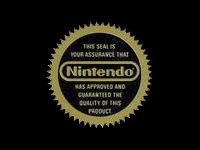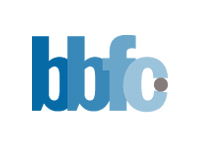Introduction
When you're a fan of video games, it's hard to turn on the news and hear something that won't turn your stomach. Headlines have read everything from cop-killers being brainwashed by Grand Theft Auto to racing games making you drive like a maniac. People have starved themselves for video games, committed thefts for video games, and even killed others. And in many cases, the game becomes their defence against the charges.Each time these issues arise, a cry comes out to ban this game or restrict that one, and it leaves many of us who are gamers scratching our heads. After all, don't we have ratings agencies to caution parents? And speaking of parents, where are they while little Jimmy shoots up his school or Bobby builds bombs in his basement?
Particularly in the US, there are outcries for stronger, more binding ratings like the EU has. But the funny thing is, most people in the US don't have a clue what the ratings guidelines in the EU are. And sadly, many people in the EU aren't really much more aware. So we thought it might be a good time to take a minute and pull fact from fiction in the ratings game. Who are the players? What does it entail? And how does the disconnect on both sides of the pond hurt the gaming community worldwide?
Let's have a look. But before we do, it's time to get into...
A little history
I doubt it would surprise anyone to learn that the first video game ratings system had little to do with restricting the content and a lot to do with just certifying it. The very first form of certification actually came from Nintendo of America with its "Seal of Quality" back in 1985. The seal debuted with the release of the NES game system in the USA, and was meant to ease consumer confidence that titles would meet certain content quality standards before they were allowed to be published on the device.It was very shortly after (only 1986) that computer games also saw their first certification, this time over in the UK. However, this rating had much less to do with marketing and much more to do with restriction. The British Board of Film Classification (which we will get into later) chose to review the text-based adventure game Dracula, giving it a "15" rating. The act actually saw a bit of controversy, particularly since the game was text- based. Had it been released in a book form, there would have been no age restriction applied to it whatsoever.
Of course, the development of proper regulatory agencies would take a few more years on both sides of the pond. In the US (and Canada as of 2002), the Entertainment Software Ratings Board didn't come into existence until 1995, when it was adopted by the Entertainment Software Association. For a timeline, that's a year after the smash hit Doom, meaning that id's biggest masterpiece didn't even get a rating until well after the fact. On the other side of the pond, the Pan European Game Information initiative didn't come into effect until 2003 - before then, many European countries regulated independently, causing a great discord in marketing methods and areas.


Left: Nintendo of America's Seal of Quality. Right: The BBFC stepped in to rate games in the UK.
Playing the game
The problem with ratings is that many consumers expect to see them. A customer expects a rating, because that rating gives him or her some idea of the contents - it's hard to sell a game without it. In a way, the idea hearkens back to Nintendo's Seal of Quality - someone else has reviewed it, therefore it is alright. That symbol is the reassurance that someone else has set eyes on this before you paid for it.The eyes aren't only on the consumer end, either. Retailers look for the ratings both for sales and for their own protection. The rating serves as a liability reducer - if a parent buys a game that's not suitable for his or her kid, that isn't the salesperson's fault or the store's. The parent ended up putting down the money, even with a symbol marking the appropriate age (and reasoning) on the front of the box. If the content was more graphic than it was rated, that isn't really the shop's fault either. The ratings exercise is far from a universal insurance blanket, but it reduces returns, angry customers, and mis-sold product. For a retailer, it's a pretty handy thing.
With both consumer and retailer eyes scanning the box cover for a rating, it's hard for video games that wish to be featured in stores to not obtain one. Of course, a high rating means that you'll lose a large percentage of your target audience - particularly in the US, where age groups can jump from the broad terms of "Everyone" to "Teen" to "Mature" without much in between. And because of that, publishers and developers will often try to low-ball the content for the rating...a task all too easy once you see the ratings methods and standards by the various agencies.
So let's take a look at these organisations, shall we?

MSI MPG Velox 100R Chassis Review
October 14 2021 | 15:04











Want to comment? Please log in.